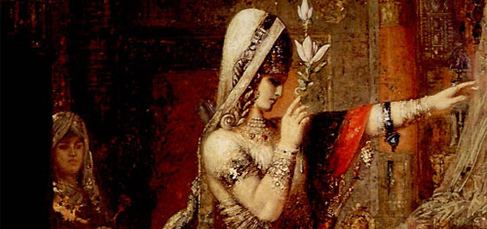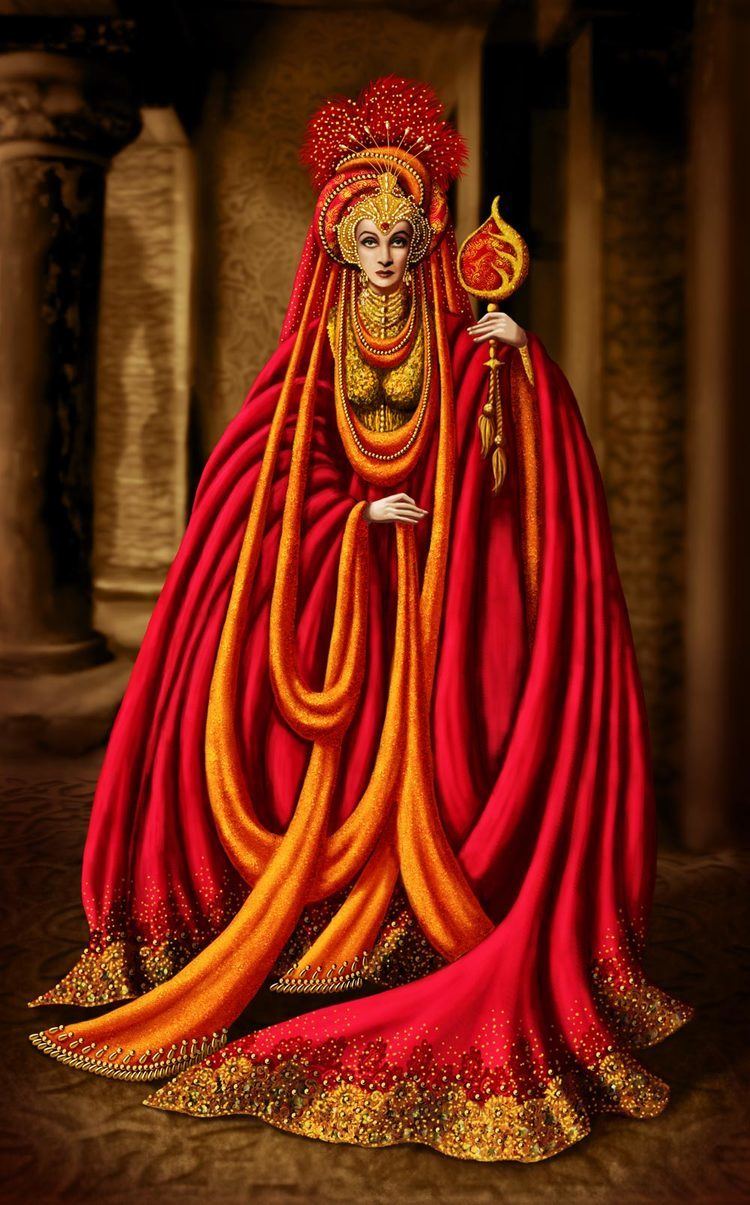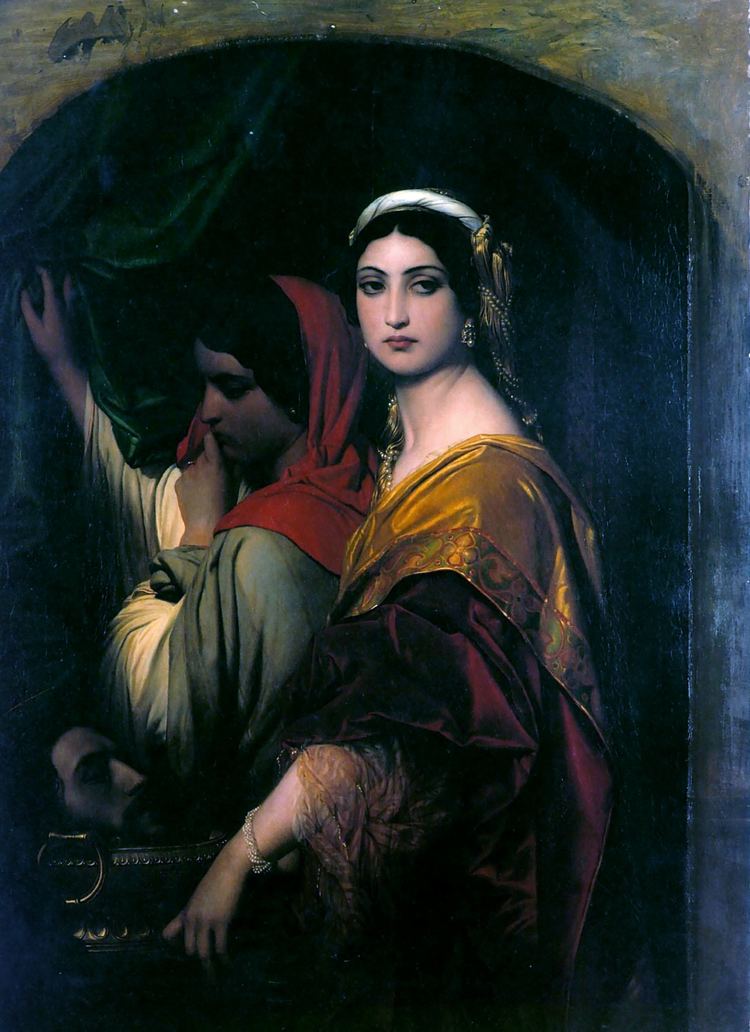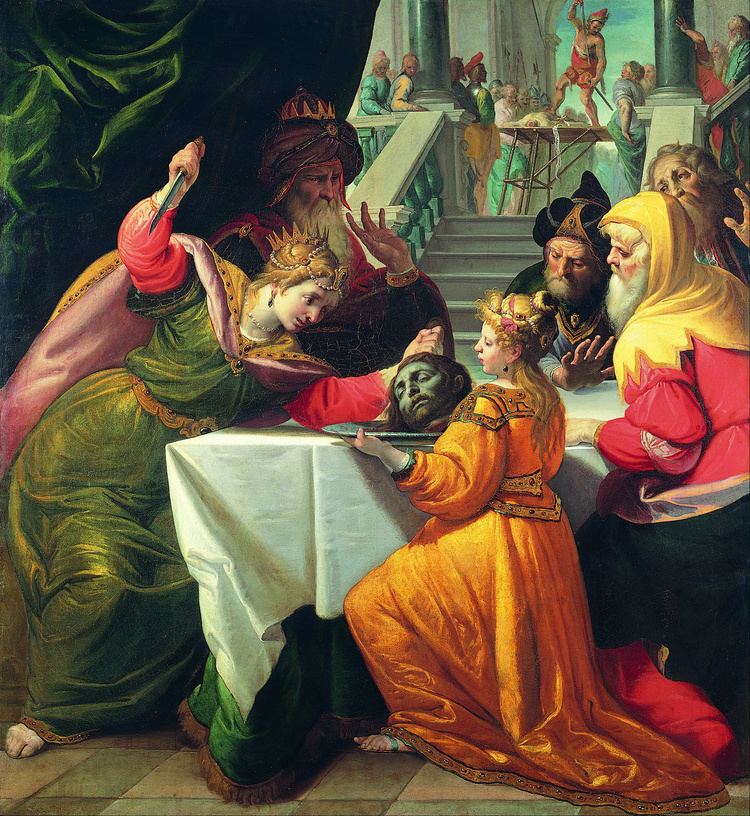Name Herodias Herodias Died 39 AD Children Salome | Parents Berenice, Aristobulus IV Siblings Herod Agrippa | |
 | ||
Similar People | ||
History of Herodias & Salome II Dance of the Seven Veils. Hindi & Urdu
Herodias (Greek: Ἡρωδιάς, Hērōdiás; c. 15 BC — after 39 AD) was a princess of the Herodian dynasty of Judaea during the time of the Roman Empire.
Contents
- History of Herodias Salome II Dance of the Seven Veils Hindi Urdu
- Empathy for the Wicked HERODIAS 4K Founded in Truth Ministries HD
- Family relationships
- Herod II
- Herod Antipas
- In the Gospels
- Modern scholarship
- In medieval literature
- In art
- Herodias in fiction
- References

Empathy for the Wicked: HERODIAS 4K | Founded in Truth Ministries HD
Family relationships

Herod II

Herod the Great's execution of his sons, Alexander and Aristobulus IV, in 7 B.C., left Herodias an orphan. Herod engaged her to Herod II (born - ca. 27B.C.; died - 33A.D.), her half-uncle. The marriage was opposed by Antipater II, Herod the Great's eldest son, and so Herod demoted Herod II to second in line to the throne. Antipater's execution in 4 B.C. for plotting to poison his father left Herod II as first in line, but his mother's knowledge of the poison plot, and failure to stop it, led to his being dropped from this position in Herod I's will just days before he died.

The Gospel of Mark states that Herodias was married to Philip, therefore some scholars have argued his name was Herod Philip (not to be confused with Philip the Tetrarch, whom some writers call Herod Philip II). Many scholars dispute this, however, and believe it was an error, a theory supported by the fact that the Gospel of Luke drops the name Philip. Because he was the grandson of the high priest Simon Boethus he is sometimes described as Herod Boethus, but there is no evidence he was called by that name.
There was one daughter from this marriage, Salome.
Herodias later divorced Herod II, although it is unclear when they were divorced. According to the historian Josephus:
Herodias took upon her to confound the laws of our country, and divorced herself from her husband while he was alive, and was married to Herod Antipas
Herod Antipas
Herodias's second husband was Herod Antipas (born before 20 B.C.; died after 39 A.D.) half-brother of Herod II (her first husband). He is best known today for his role in events that led to the executions of John the Baptist and Jesus of Nazareth.
Antipas divorced his first wife Phasaelis, the daughter of King Aretas IV of Nabatea, in favor of Herodias. According to biblical scholars, the Gospel of Matthew and the Gospel of Luke, it was this proposed marriage which John the Baptist publicly criticized. Besides provoking his conflict with the Baptist, the tetrarch's divorce added a personal grievance to previous disputes with Aretas over territory on the border of Perea and Nabatea. The result was a war that proved disastrous for Antipas; a Roman counter-offensive was ordered by Tiberius, but abandoned upon that emperor's death in 37 A.D.. In 39 A.D. Antipas was accused by his nephew Agrippa I of conspiracy against the new Roman emperor Caligula, who sent him into exile in Gaul. Accompanied there by Herodias, he died at an unknown date.
It is uncertain if Herodias had any children by her second husband, Herod Antipas.
In the Gospels
In the Gospels of Matthew and Mark, Herodias plays a major role in John the Baptist's execution, using her daughter's dance before Antipas and his party guests to ask for the head of the Baptist as a reward. Antipas did not want to put John the Baptist to death, for Antipas liked to listen to John the Baptist preach (Mark 6:20). Furthermore, Antipas may have feared that if John the Baptist were to be put to death, his followers would riot.
Modern scholarship
Some biblical scholars have questioned whether the Gospels give historically accurate accounts of John the Baptist's execution. According to the ancient historian Josephus, John the Baptist was put to death by Antipas because he feared the prophet's seditious influence. Some exegetes believe that Antipas' struggle with John the Baptist as told in the Gospels was some kind of a remembrance of the political and religious fight opposing the Israelite monarchs Ahab and Jezebel to the prophet Elijah.
In medieval literature
In medieval Europe a widespread belief held Herodias to be the supernatural leader of a supposed cult of witches, synonymous with Diana, Holda and Abundia.
In art
Together with Salome, Herodias was a frequent subject in images of the Power of Women topics in the later medieval and Renaissance period. The most common moment shown including Herodias is the Feast of Herod, showing Salome presenting John's severed head on a platter as Herodias dines with her husband and others.
